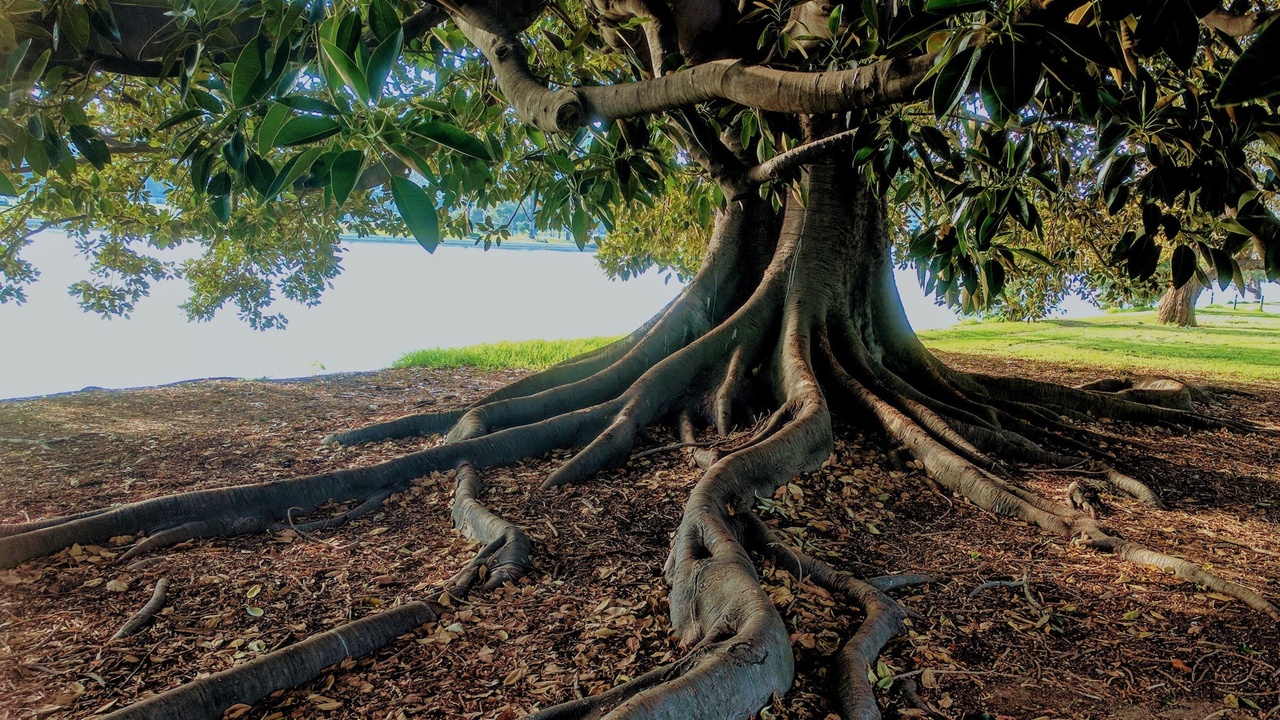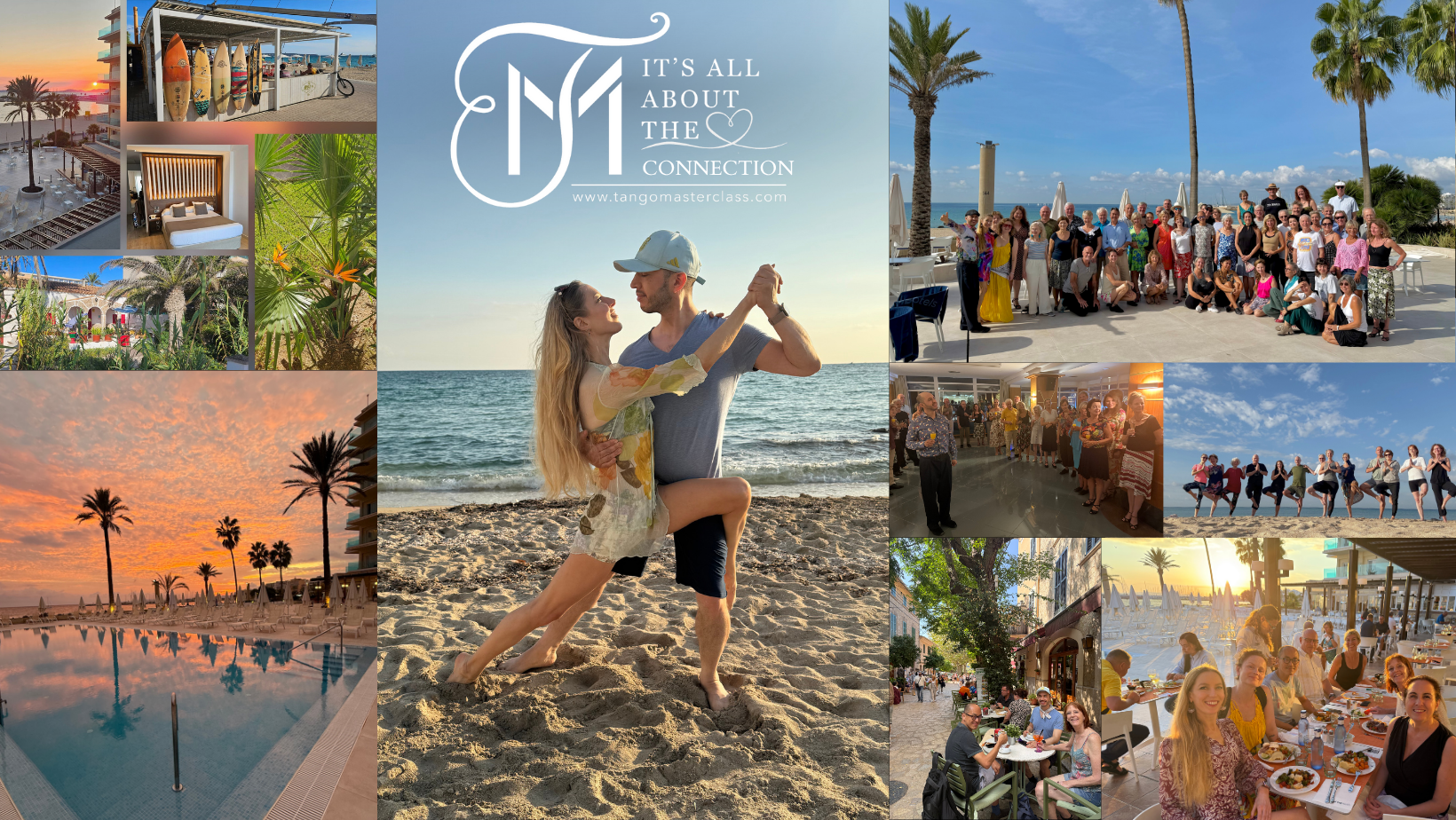Root to Rise
Oct 27, 2021
27 October 2021, by Cosima Díaz Campos
In tango, as in nature, we root down in order to rise up. And we also rise up to root down. It's a two way stream.
Our tango embrace is build from the ground. A grounded stance is so important: we root to rise! From a solid, balanced standing position we can embrace each other in a free and comforting way. Without a good fundament from the body, the embrace will be easily used to correct our own imbalance or postural problems.
In our classes we emphasize how we use the connection to the floor to rise in our upright posture. The idea behind the phrase 'root to rise' is that every position and movement is built from the ground up.
Pada bandha (foot lock) is a yoga technique in which the soles of the feet are placed on the ground so the weight is evenly distributed in the foot. This pada bandha connects the body with the earth through the feet. This contact with the floor engages energy, that flows through the body, energizing and balancing the whole being.
In all movement disciplines this concept exists and is very important. In tango we talk about 'grounding'. It provides centeredness, stability and balance. Physically, it strengthens the arches of the feet and engages the muscles throughout the lower body, toning them.
Mindfulness in our steps
When we dance we can be mindful of every transition we make. We are aware of how we shift the weight from one leg to the other. We can feel how the weight is gradually lifted from the standing leg, how the points of contact with the floor change, and what is the final contact point untill the leg is finally free of weight support, yet still connected to the floor, and being quiet in space or moving to become the standing leg for the next transition of weight. This practice brings so much joy to our dance, and it is a great way to be in the here and now, with the floor and to be with our body in space and time. And if we practice this as a couple it helps us to be aware of our dance partners connection to the ground.
Sole of the Foot
We spread our weight over all the points of contact of our foot: the heel, the arch of the foot, the whole ball of the foot and all five toes. The muscles of the transveral and longitudinal arches of the foot are active, and the mediolongitudinal arch is lifted. The weight of the front of the foot is spread evenly between the outside and the inside of the foot and the five toes, to cause a good alignment of the ankle joints and a good alignment in the knees, hips and spine. The big toe is connected to the strongest muscles of the five toes, but the four little toes together also do a great job at supporting our body. For a good grounding it is also important that the weight is evenly distributed between the heel of the foot and the front part of the foot.

Tips for Tango Teachers
A common error in ankle and foot balance (loosing the balance to the outside of the foot) is often corrected by teachers with a new error. Recommending the student to bring more weight to the ball of the big toe than the little toe, to correct a loss of balance to the outside of the foot, causes more harm than good. It causes a new imbalance and a lot of pain in the foot, damaging the base joints of the big toe. It can even lead to or exacerbate hallux valgus. The proper correction is, to spread the weight evenly in the foot: right and left, back and front. And bringing more focus to the big toe (and not the ball of the big toe) often helps the student a lot. That is because the big toe activates a muscle, that can be strengthened, whereas the ball of the big toe is a joint, that can not be strengthened.
And this brings us to the last topic of this blog: the knowledge of a tango teacher needs to go deeper than the information they provide to their students. If you don't know enough about a topic, don't teach it, or investigate the topic deeper. For example, if you talk about anatomy in a tangoclass, it is not enough to repeat what your own teacher said about it. Look it up, have a look at the anatomy, ligaments, jointes, the function of the muscle, it's attachments to the bones, etc.
If your teacher taught you how "the dorsals" are attached to the little finger and the pelvis, don't just repeat it to your own students, but study the anatomy of the human body and discover that such a muscle does not exist ;-)
I have heard the strangest analysis from tango teachers, such as:
- moving the ribs in anatomically impossible ways and directions:
of course no student can do that, and every student will feel intimidated and in awe of the teachers 'physical mastery'; - dropping one side of the hips in order to liberate the free leg:
anatomically it is possible, but the effect is the opposite of liberation, and causes imbalance in the whole alignment; - not activating the glutes when walking backwards, but instead activate our hip flexors:
the opposite is what's happening when we extend the leg to the back: we activate the glutes and relax the hip flexors.
Most students will still get good results from the tango classes, because the movements are shown and danced correctly. Some students might have had anatomy in school, but will not say anything to the teacher (just like I did never said anything). But tango students deserve better, and should get tips that really help them to move with more ease, and in a healthy way.
So the moral of the story is: don't just copy something you heard from a famous tango teacher, but check the science, before you tell it to your students. Ask a physiotherapist or a movement therapist. And if you don't know enough about the topic, leave it to the experts and don't teach it in your classes.
The argument that could be made in favour of these incorrect explanations is this: but it works for our tango! Well, if the idea of the little finger being connected to the pelvis helps a dancer to dance better: great, go ahead and use the idea to improve the dance. But we don't need to invent a muscle to work with this idea.
Many visualisations that are totally not linked to anatomy help us incredibly well as dancers. Visualizing shapes around us or inside our body, imaginations of different qualities such as water, air, fire, or earth, visualizing elastics,and spirals can have an incredible impact on the quality of our movement. We use visualisations much more in our classes than anatomical theory, because it has such a direct effect. Sometimes it can be very useful to feel the activation or relaxation or certain muscles, and it is enough for the tango teacher to know exactly where the muscles are attached, and what is their function. Let us not confuse ideas, imagination and visualisation with anatomy, and stay true to the facts when we decide to talk about anatomy and biomechanics.
Back to the idea: root to rise. It is very practical concept, it is something we actually really all apply when we dance. Great to use this phrase in class. And it sure helps if you as a tango teacher know the anatomy of the foot (bones, ligaments, joints, muscles, mechanics).


